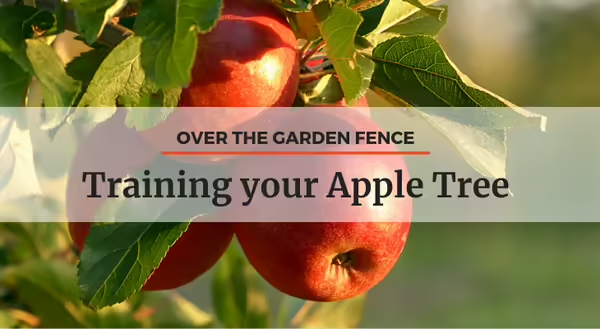
Just what do experts mean when they say to train your fruit trees? It means home orchardists should train the branches for proper tree structure; this encourages fruit production and allows the fruiting branches to support the fruit load without additional support. The branches need to be positioned to allow good sunlight throughout the canopy from the interior to the outside of your tree canopy. This also will let air circulate in the canopy, reducing leaf and fruit diseases, so you benefit in two ways.
Using dwarf apple trees as an example, you will likely use what is called the central leader system to train your trees. The central leader system allows your fruit tree to look like most other trees in your landscape yet produce apples without the tree looking like those you see in a commercial orchard. Training starts the first year you plant the dwarf trees. This will ensure your dwarf tree remains dwarf in your home orchard.
You will be able to start to select your scaffold branches placing the first set of scaffold branches no more than 24 inches from the ground. By starting that low, you will be able to place additional scaffolds and still have a mature tree that is no taller than 6 to 8 feet tall, making it very easy to manage. That may be too low to mow easily, so consider a large ring of mulch that extends to the edge of the canopy. This mulch ring can be increased in size as needed. If a dwarf tree is allowed to grow without being well trained, that fruit tree will be much larger that you planned for and fruit production will likely be delayed.
There are several other advantages of a well-trained dwarf fruit tree. Annual spring pruning will be easier, as it will be visually much clearer what branches will need your attention. There will be branches that need to be adjusted using traditional branch spreaders or alternative methods, such as using twine and a stake to pull the branch into the desired horizontal plane you need as you develop your scaffolds. Water sprouts are easily identified as they will be growing straight up from the horizontal scaffold branches. Foliage and fruit treatments will be much easier too, as the scaffolds will allow easy access to the entire canopy. Harvest is much easier and a lot more fun too.
As your dwarf fruit tree matures, home orchardists will realize there are additional benefits. The weekly inspection and monitoring of fruit pests will be easier and done very quickly. Even though young fruit trees may not be producing apples, there are insects and foliar diseases that need to be taken care of. Foliage feeding insects reduce the canopy, reducing the amount of food that could go into growing a strong tree. Leaf diseases have a similar impact. If allowed to continue over the season or seasons, they could easily delay fruit production and limit the number of high-quality fruits you are able to harvest. You want a tree that develops quickly, yet one that you have trained to encourage flower and fruit set. Enjoy the challenge and amaze your friends with fruit that came right out of your yard.
About the author: Richard Hentschel’s expertise extends across several subject areas with specialties in lawn care, fruit tree production, woody ornamentals, and home and community gardening. During his 45-year career in horticulture and agriculture, Hentschel became a well-known and respected expert for commercial and homeowner audiences, industry organizations, and media. He retired from University of Illinois Extension in April 2022 with nearly 30 years of service as a Horticulture Specialist and Educator in northern Illinois.